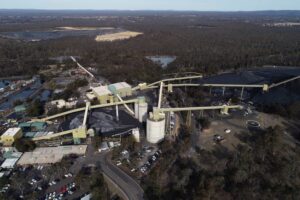Wind capacity factors
With so much new wind being built we thought it worth having a quick check on achieved wind capacity factors. This isn’t completely straightforward because lots of wind farms have more than one name and sometimes the “Portland wind farm” can be 3 separate stages. In this quick head line look we don’t adjust for “vintage”, that is when the wind farm is built.
Three factors drive wind farm capacity factors: (1) the expected wind on the site (2) the age (newer windfarms have “better” technology) and (3) the seasonal conditions.
As is well known the June half 2017 was poor for wind. The worst capacity factor was Australia’s current largest site Macarthur and on our numbers Snowtown Stage 1 has the highest cap use in the NEM.
We calculated monthly average output using NEM Review from Jan 2014 and then took the average of all those months. The overall weighted average is around 32%. We expect that to increase as the current vintage comes on line. Capacity is in MW.

Turning to the weekly action to August 18.
- Future prices This marked the third nothing week for futures. Prices didn’t move. Federal Govt policy is stalled and the futures markets are likely unclear as to how things will go
- Spot electricity prices . Spot prices broadly fell over the week but remain double last year’s level.
- REC. Prices were unchanged. Uncertainty on the post 2020 REC outlook remains key. Our working hypothesis is that the REC scheme will be rolled into a CET for administrative simplicity.
Gas prices Gas prices were a bit above last year but there is no sense of crisis or panic. Should AGL build its Cribb Point terminal there’s the possibility of another 100 PJ of gas coming into Victoria each year. Not cheap gas but enough to support process gas demand at the very least.
- Utility share prices. Origin’s (ORG)result in the end was welcomed more than AGL’s by the sharemarket. Yield related names have fallen somewhat from favour. During the week it was confirmed that the IPO of Windlab has been successful. A reading of the Windlab prospectus demonstrated that:
- Windlab has successfully identified a number of windfarms including Coopers Gap and Arafat for which it received development fees.
- The PE ratio looks very low but that’s because the vast majority of fees are non recurring.
- The value of the business is likely to depend on the success of the Kennedy Energy Park. Initial stage of Kennedy is 40 MW of wind, 15 MW AC of PV and 2 MW/4 MWh of storage. The question is whether to consider this a 40 MW plant or a 67 MW plant, but as we look at it the idea seems to be to run the unit as one facility. The figure below is from the IPO documents.

Average ouput of the plant on this basis is about say 24 MW (from eyeballing the graph). Relative to the wind capacity of 40 MW that’s a capacity factor 56%. However, the capital required is $156 million which relative to the wind farm is close to $4 m/MW, double that of a vanilla wind farm.
The prospectus states that Kennedy Phase 2, 80 km North of Hughenden can support 1200 MW of wind and allied PV and storage. That’s over $2 billion of capex.
We also note it requires the Qld Govt to go ahead with the North Qld transmission upgrade. The Genex Kidston pumped Hydro plant also requires that transmission.
As we have noted the Qld Govt has committed $150 million but what was surprising to read in the Windlab Prospectus is that the full cost of the transmission upgrade is actually $500 m.

Share Prices


Volumes

Base Load Futures

Gas Prices


David Leitch is principal of ITK. He was formerly a Utility Analyst for leading investment banks over the past 30 years. The views expressed are his own. Please note our new section, Energy Markets, which will include analysis from Leitch on the energy markets and broader energy issues. And also note our live generation widget, and the APVI solar contribution.








